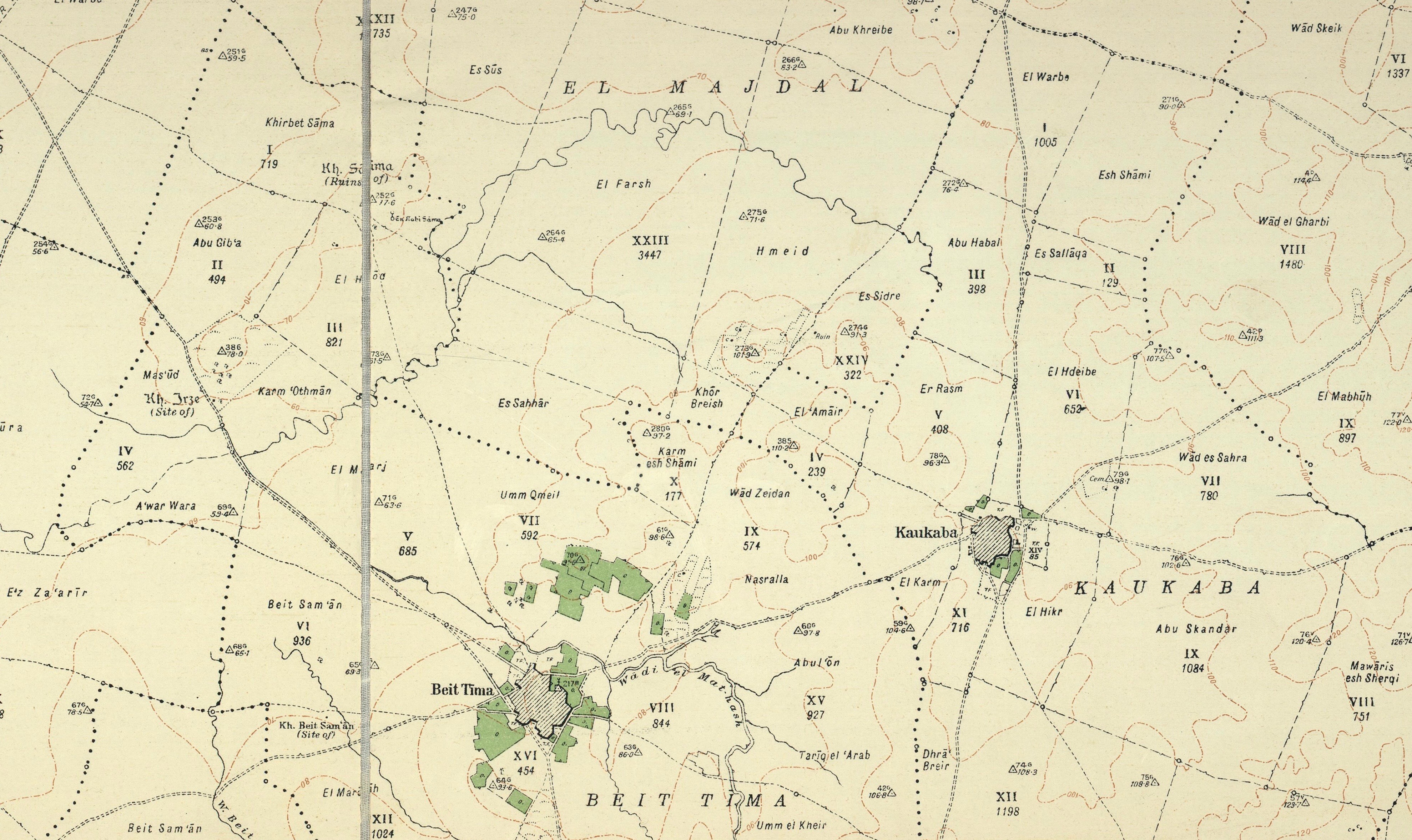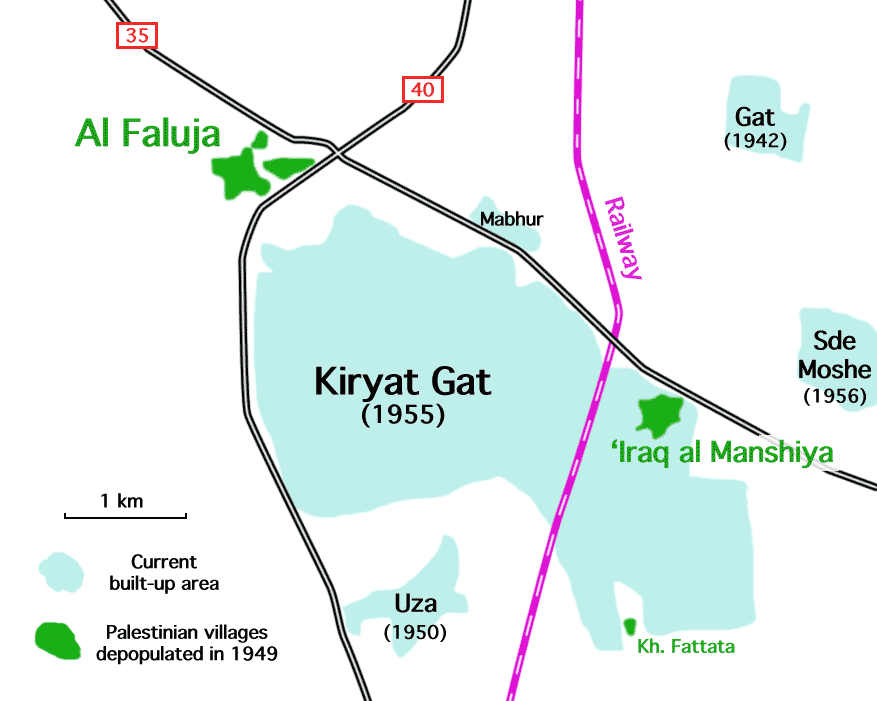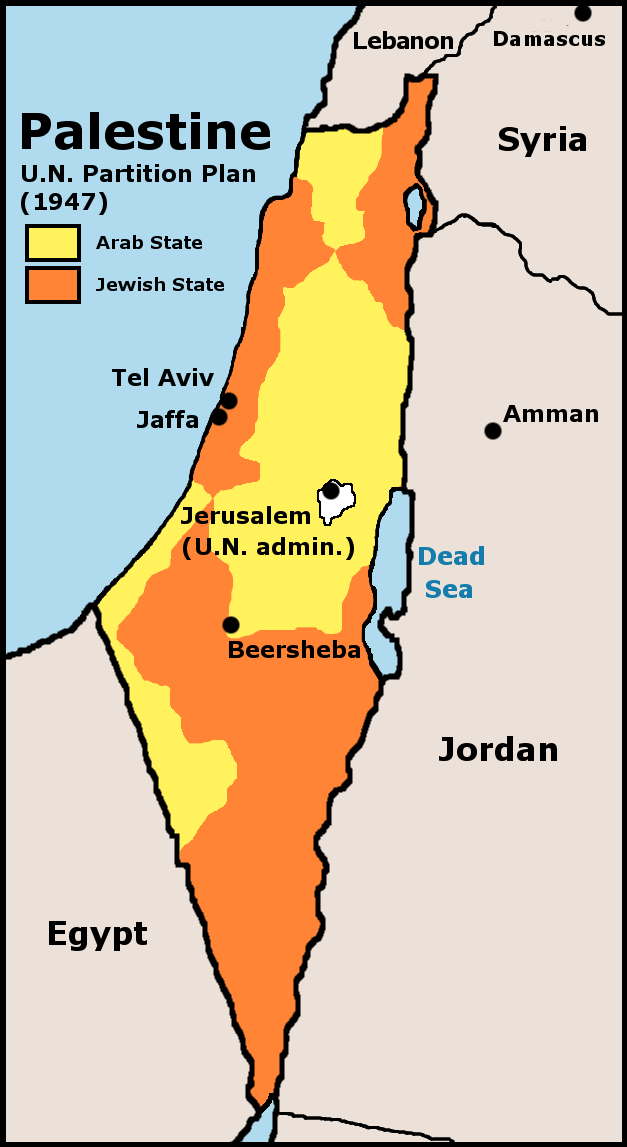|
Battles Of Negba
The Battles of Negba were a series of military engagements between the Israel Defense Forces and the Egyptian army in the 1948 Arab–Israeli War. Negba, a kibbutz founded in 1939, had a strategic position overlooking the Majdal – Bayt Jibrin road, and was a target of two major assaults by the Egyptians in June and July 1948. On June 2, the Egyptians attacked the village from the south with a battalion reinforced with armor, artillery, and aircraft, and were beaten back by 140 defenders, who were assisted by motorized Negev Brigade forces. The second attack took place on July 12, when the Egyptians staged diversionary assaults on nearby positions and surrounded Negba from all sides, again with a reinforced battalion. This attack was also dispersed, and Negba remained in Israeli hands, serving as a forward base for attacks against Egyptian forces up to Operation Yoav. Background Kibbutz Negba was founded in 1939 as a tower and stockade settlement, the first lasting modern Je ... [...More Info...] [...Related Items...] OR: [Wikipedia] [Google] [Baidu] |
1948 Arab–Israeli War
The 1948 (or First) Arab–Israeli War was the second and final stage of the 1948 Palestine war. It formally began following the end of the British Mandate for Palestine at midnight on 14 May 1948; the Israeli Declaration of Independence had been issued earlier that day, and a military coalition of Arab states entered the territory of British Palestine in the morning of 15 May. The day after the 29 November 1947 adoption of the United Nations Partition Plan for Palestine – which planned to divide Palestine into an Arab state, a Jewish state, and the Special International Regime encompassing the cities of Jerusalem and Bethlehem – an ambush of two buses carrying Jews took place in an incident regarded as the first in the civil war which broke out after the UN decision. The violence had certain continuities with the past, the Fajja bus attack being a direct response to a Lehi massacre on 19 November of five members of an Arab family, suspected of being British informan ... [...More Info...] [...Related Items...] OR: [Wikipedia] [Google] [Baidu] |
Negev
The Negev or Negeb (; he, הַנֶּגֶב, hanNegév; ar, ٱلنَّقَب, an-Naqab) is a desert and semidesert region of southern Israel. The region's largest city and administrative capital is Beersheba (pop. ), in the north. At its southern end is the Gulf of Aqaba and the resort city and port of Eilat. It contains several development towns, including Dimona, Arad and Mitzpe Ramon, as well as a number of small Bedouin towns, including Rahat and Tel Sheva and Lakiya. There are also several kibbutzim, including Revivim and Sde Boker; the latter became the home of Israel's first Prime Minister, David Ben-Gurion, after his retirement from politics. Although historically part of a separate region (known during the Roman period as Arabia Petraea), the Negev was added to the proposed area of Mandatory Palestine, of which large parts later became Israel, on 10 July 1922, having been conceded by British representative St John Philby "in Trans-Jordan's name". Despite this, the ... [...More Info...] [...Related Items...] OR: [Wikipedia] [Google] [Baidu] |
Julis, Gaza
Julis ( ar, جولس) was a Palestinian Arab village in the Gaza Subdistrict, located northeast of Gaza on a slight elevation along the southern coastal plain. In 1945, there were 1,030 inhabitants in the village. It was depopulated during the 1948 Arab-Israeli War.Khalidi, 1992, p.115. History Julis was built on an archaeological site whose ancient name is unknown. Potsherds from the Mamluk era have been found in the village. The village had a Maqam (shrine) which was constructed with ancient materials. Ottoman Empire Julis was incorporated into the Ottoman Empire in 1517 with the rest of Palestine, and by 1596 it was part of the ''nahiya'' of Gaza, in the Liwa of Gaza. It consisted of 204 persons (37 households), all Muslims. They paid a fixed tax-rate of 33,3 % on agricultural products, including wheat, barley, fruit, beehives, vineyards and goats; a total of 10,400 akçe. 6,5/24 of the revenue went to a Waqf. In 1838, Julis was noted as a village in the Distr ... [...More Info...] [...Related Items...] OR: [Wikipedia] [Google] [Baidu] |
Kawkaba
Kawkaba (), known to the Crusaders as Coquebel, was a Palestinian Arab village that was occupied by Israel during Operation Yoav during the 1948 Arab-Israeli War, and depopulated. Location The village was situated on an uneven stretch of red-brown soil on the southern coastal plain. It lay on the highway constructed by the British during World War II, which paralleled the coastal highway. History The site was known during the Crusades as Coquebel. Kawkaba contained an archaeological site with a pool, cisterns, the foundations of buildings, columns, severed capitals. North of it was Khirbat Kamas, which was identified as the Crusader Camsa and which yielded some archaeological artifacts. Ottoman era Kawkaba was incorporated into the Ottoman Empire in 1517 with the rest of Palestine, and by 1596 tax record it was known as ''Kawkab'', with a population of 16 Muslim households; an estimated 88 persons. The villagers paid a fixed tax rate of 33,3% on a number of crops, including ... [...More Info...] [...Related Items...] OR: [Wikipedia] [Google] [Baidu] |
Iraq Suwaydan
Iraq Suwaydan ( ar, عراق سويدان, he, עיראק סווידאן) was a Palestinian Arab village located northeast of Gaza City. It was captured by Israeli forces in Operation Yoav against the defending Egyptian Army during the 1948 Arab-Israeli War. The village infrastructure, with the exception of the police station built by the British Mandate authorities, was destroyed. History Archaeological excavations have found remains from the early Roman, Byzantine and Umayyad periods. Ottoman Empire Iraq Suwaydan, like all of Palestine was incorporated into the Ottoman Empire in 1517. In the 1596 tax registers, Iraq Suwaydan was listed as an entirely Muslim village called "Iraq", located in the ''nahiya'' of Gazza, part of Gaza Sanjak, with a population of 45 families and 16 bachelors. The inhabitants paid a fixed tax rate of 33.3% on agricultural products, including wheat, barley, summer crops, vineyards, fruit trees, sesame, goats and beehives, in addition to occasiona ... [...More Info...] [...Related Items...] OR: [Wikipedia] [Google] [Baidu] |
Tegart Fort
A Tegart fort is a type of militarized police fort constructed throughout Palestine during the British Mandatory period, initiated as a measure against the 1936–1939 Arab Revolt. Etymology The forts are named after their designer, British police officer and engineer Sir Charles Tegart. In Israel, the name is often pronounced "Taggart". This is probably due to the transliteration of the name to Hebrew and then back to Latin alphabet, along with the translator's wrong assumption that the most common way of writing this anglicised Scottish surname has to be applied ("Taggart" is far more widespread than "Tegart"). History Mandate Palestine Sir Charles Tegart designed the forts in 1938 based on his experiences in the Indian insurgency. They were built of reinforced concrete with water systems that would allow them to withstand a month-long siege. Two types of forts were erected. Five structures were built to reinforce the so-called " Tegart's wall" of the northern border wit ... [...More Info...] [...Related Items...] OR: [Wikipedia] [Google] [Baidu] |
Al-Faluja
al-Faluja ( ar, الفالوجة) was a Palestinian Arab village in the British Mandate for Palestine, located 30 kilometers northeast of Gaza City. The village and the neighbouring village of Iraq al-Manshiyya formed part of the Faluja pocket, where 4,000 Egyptian troops, who had entered the area as a result of the 1948 war, were besieged for four months by the newly established Israel Defense Forces. The 1949 Armistice Agreements allowed for a peaceful transfer of those areas outside Gaza to Israeli control, allowing Egyptian troops to remain in Gaza. Following the agreements, the Arab residents were harassed and abandoned the villages. The Israeli town of Kiryat Gat, as well as the moshav Revaha, border the site of the former town. History Until the Bar Kochba revolt, there was a large Jewish village called Kfar Shahalim. After the Arab conquest of the Land of Israel, a sign was erected on its ruins. The town was founded on a site that had been known as "Zurayq al-Khandaq", na ... [...More Info...] [...Related Items...] OR: [Wikipedia] [Google] [Baidu] |
Isdud
Isdud ( ar, اسدود) is a former Palestinian people, Palestinian village and the site of the ancient and classical-era Levantine metropolis of Ashdod. The Arab village, which had a population of 4,910 in 1945, was depopulated during the 1948 Arab-Israeli War. Today the ruins are located in the Be'er Tuvia Regional Council, Be'er Tuvia region, 6 km southwest of the modern Israeli city of Ashdod. The archaeological site is known as Tel Ashdod, and remnants of the settlement's ancient and modern remains are visible. The first documented urban settlement at Isdud dates to the 17th century BCE, when it was a fortified Canaan, Canaanite city. It was destroyed at the Bronze Age Collapse, end of the Late Bronze Age. During the Iron Age, it was a prominent Philistines, Philistine city, one of the Philistia, five Philistine city-states. It is mentioned 13 times in the Hebrew Bible. After being captured by Uzziah, it was briefly ruled by the Kingdom of Judah before it was taken by the Ne ... [...More Info...] [...Related Items...] OR: [Wikipedia] [Google] [Baidu] |
Battle Of Yad Mordechai
The Battle of Yad Mordechai was fought between Egypt and Israel in the 1948 Arab-Israeli War, at the Israeli kibbutz of Yad Mordechai. The Egyptians attacked the settlement several times throughout May 19 and May 20, but failed to capture it. A final attack was launched on May 23, in which the Egyptians succeeded in capturing part of Yad Mordechai, following which the Israeli defenders withdrew. Yad Mordechai finally fell to the Egyptians on May 24 after hours of bombardment of the vacated kibbutz. The kibbutz residents, aided by twenty Hagannah fighters, imposed a five-day delay on the Egyptians. This gave Israeli forces time to prepare for the Egyptians' northward advance, and they succeeded in halting the Egyptian advance at Ad Halom less than a week later. Background Yad Mordechai is a small kibbutz in southern Israel, founded in the 1930s and renamed in 1943 after Mordechaj Anielewicz, the leader of the Warsaw Ghetto Uprising. The kibbutz, perched on a hill, dominated the co ... [...More Info...] [...Related Items...] OR: [Wikipedia] [Google] [Baidu] |
Battles Of Kfar Darom
The Battles of Kfar Darom refer to a number of military engagements in 1947–1948 between the Jewish Haganah and various Arab forces in the 1948 Arab–Israeli War, in the southern kibbutz Kfar Darom. The most notable battles were fought on May 13–15, 1948, between the Palmach and the Egyptian army, including Muslim Brotherhood units. The kibbutz was defended by about 30 Israelis and held out against numerous attacks. While Egyptian assaults were unsuccessful, their siege led to the evacuation of the kibbutz by its members on July 8, 1948, after resupply attempts through the ground and air by the Israeli Negev Brigade and air force were insufficient or failed entirely. The Egyptian army stormed it the next day only to find it empty. Background Kfar Darom was originally a fruit orchard established in 1930 by the citrus grower Tuvia Miller, located far from the rest of the Jewish population of the British Mandate of Palestine. It was destroyed in the 1936–1939 Arab revolt in ... [...More Info...] [...Related Items...] OR: [Wikipedia] [Google] [Baidu] |
Highway 4 (Israel)
Highway 4 ( he, כּֽבִישׁ אַרְבַּע, ''Kvish Arba' '') is an Israeli highway that runs along Israel's entire Israeli Coastal Plain, coastal plain of the Mediterranean Sea, from the Rosh HaNikra Crossing, Rosh HaNikra border crossing with Lebanon in the Northern District (Israel), North to the Israeli Gaza Strip barrier#Erez Crossing, Erez Border Crossing with the Gaza Strip in the South. The highway follows in part the route of the ancient Via Maris. Until the 1990s and the withdrawal of Israel Defense Forces from most of the Gaza Strip due to the Oslo Accords, Highway 4 continued all the way until Rafah and the Egypt, Egyptian border. The part of the remaining highway in the Gaza Strip is called the Salah al-Din Road. Although the highway is continuous, it is generally considered to be divided into five sections, each with its own nickname and characteristics such as a differing number of lanes and speed limits: *Northern Coastal Highway (Rosh Hanikra–Haifa). This ... [...More Info...] [...Related Items...] OR: [Wikipedia] [Google] [Baidu] |
Declaration Of Independence (Israel)
The Israeli Declaration of Independence, formally the Declaration of the Establishment of the State of Israel ( he, הכרזה על הקמת מדינת ישראל), was proclaimed on 14 May 1948 ( 5 Iyar 5708) by David Ben-Gurion, the Executive Head of the World Zionist Organization, Chairman of the Jewish Agency for Palestine, and soon to be first Prime Minister of Israel. It declared the establishment of a Jewish state in Eretz-Israel, to be known as the State of Israel, which would come into effect on termination of the British Mandate at midnight that day. The event is celebrated annually in Israel with a national holiday Independence Day on 5 Iyar of every year according to the Hebrew calendar. Background The possibility of a Jewish homeland in Palestine had been a goal of Zionist organizations since the late 19th century. In 1917 British Foreign Secretary Arthur Balfour stated in a letter to British Jewish community leader Walter, Lord Rothschild that: His Majesty's ... [...More Info...] [...Related Items...] OR: [Wikipedia] [Google] [Baidu] |








.png)
